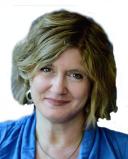Play
Healing the Wounds That Bind, and Why They Don't Define Us
The path to wholeness begins by embracing our "broken" places.
Posted April 20, 2022 Reviewed by Ekua Hagan
Key points
- Many people hold the false belief that they are broken, having lost touch with their wholeness due to ruptures in parenting.
- The path to healing is not to avoid one's feeling of brokenness, but to get curious about how it got there from an open-hearted space.
- Internal Family Systems (IFS) therapy can help people reconnect to their sense of wholeness and holiness.

Dana was in tears. Once again, she had engaged in scheduling acrobatics to meet a new friend for a romantic getaway, only to find herself alone in a hotel room with unanswered text messages and her self-destructive history with men.
“I feel like I have a hole inside me,” she said, as we began her therapy session. “I’m broken.”
I sat with her a moment in compassionate silence, and then I replied. “You are not broken. The hole is just a wound. Embracing the hole can make you whole, and reconnect you to your holiness.”
This wasn’t a mere play on words. Throughout the years, many clients have described this kind of a hole; a lonely empty feeling that makes them believe there’s nothing there. Another client described it as an essential piece missing inside them.
These clients often seek help to climb out of the hole. Often, they are afraid to “go there,” using smoke and mirrors, and substances, to distract themselves and others from the void they believe makes them unworthy.
They're usually surprised when I suggest that the path to healing doesn't lie in climbing out of the hole, but rather, by climbing in. That's because, as an Internal Family Systems (IFS) therapist, I know that the hole is not what it appears to be. Though it may look empty from the perimeter, something very alive lives there, usually the pain of childhood experiences that created the empty feeling and disconnection. And these experiences need to be lovingly witnessed and fully explored to release the sense of emptiness.
How the hole got there
According to IFS, a modality designed by family therapist Richard Schwartz, PhD., we are born whole. More specifically, IFS holds that everyone innately possesses “self energy,” a core “Self” that is inherently calm, compassionate, confident, curious, creative, courageous, clear, and connected. As Schwartz writes in "The Larger Self": “We are sparks of the eternal flame, manifestations of the absolute ground of being. It turns out that the divine within ... exists in all of us.”
Children enter the world expecting that their bids for love and attention—for example, to be fed, held, diaper-changed, helped with problems—will be lovingly met by their parents, on whom they are totally dependent. They expect their parents to be curious about who they are as individuals, to be compassionate toward their emotional and physical pain, to remain calm when they are scared, angry, or hungry, and to remain connected to them when they have needs.
When these bids are disproportionately met with a consistent, open-hearted, calm, curious, and compassionate response by parents who have access to their own self-energy, the child feels securely attached and develops a balanced personality of parts that, like instruments in a symphony, help them play the called-for notes in various life situations.
But when their cues go unmet or are very inconsistent, when children feel like their parents are not really that interested in them, or when they reach for compassion and are instead met with anger or rejection, children’s spongy, developmentally self-centered brains assume that they, themselves must be responsible—“I’m not enough,” “I’m too much,” “I don’t matter,” “I must be bad,” or “I am nothing/empty.”
After all, it’s too scary to consider that the people with total power over your life are anything less than perfectly competent. To survive, children develop strong protective parts to get or avoid attention and gain approval, while banishing the pain from consciousness to avoid the overwhelm they would feel if, in every waking moment, they felt unlovable, unwanted, etc. Hence, IFS calls these wounded little children who live inside our bodies, holding all our pain, “exiles.”
When parents can't emotionally attune
Though severe abuse and neglect can leave more tangible scars, such wounds can also occur when parents do a decent job of meeting children’s physical needs, but don’t emotionally attune well to them. In my experience, such wounding can be insidious.
Children need parents to mirror back their talents, likes, and dislikes, to help them see and accept themselves for who they are, and feel like they matter. This is how parents play a crucial role in shaping children’s identities and self-esteem. But when parents miss children’s emotional cues, don’t know how to respond to them (perhaps because they had parents who didn’t respond to theirs), or don’t like them and try to shut them down—“stop being such a crybaby"—children often feel empty and without a clear identity.
This felt sense of emptiness is often carried into adulthood. Even if with maturity they can recognize their parents’ shortcomings, some part of them still believes the emptiness is intrinsic to who they are, rather than what it actually is—an emotional scar covering an old wound blocking them from feeling connected to their essence.
Climbing into the hole to heal it
But here is the beauty of IFS: Once a therapist helps a client clear out the clouds and reconnect to their inner sun, exiles can be healed by the warmth of self-energy radiating from their adult selves. Through an embodied practice of guided witnessing and active imagination, exiles can be revived and unburdened from their false beliefs (“I am nothing”) as their older selves tend to them with the love, curiosity, and compassion they didn’t get from their parents.
Such is what Dana discovered as we explored the “hole” she felt inside her. My role was to help her get curious about the hole, and her protective system around it, so that she could eventually befriend and unburden her little exile from the painful empty feeling and reconnect with her innate vitality.
In Dana’s case, she had developed parts that overly focused on winning a man’s love, through appearance and accommodation, to protect her from the pain of her father’s rejection and abandonment. Once she befriended those parts and understood that they were trying to protect her from feeling unseen and unloved, she could more easily connect to her heart. From there, she began to get curious about the little girl at the bottom of her emotional hole, inquiring about how she got there, what it was like for her, and what conclusions she drew about herself based on what was happening at home.
As Dana began to understand how she picked up the feeling of emptiness, and love up her exile, the hole disappeared. She became more discerning about men and more interested in integrating nature and spirituality into her career and home life. She said no to the men who were offering crumbs of attention and made a life-changing move out West.
And like Dorothy from The Wizard of Oz, Dana discovered she had always the power to return to a source of love and nourishment. She just had to embrace her whole “Self.”
To find a therapist, please visit the Psychology Today Therapy Directory.
References
Schwartz, Richard, PhD. The Larger Self. https://ifs-institute.com/resources/articles/larger-self




